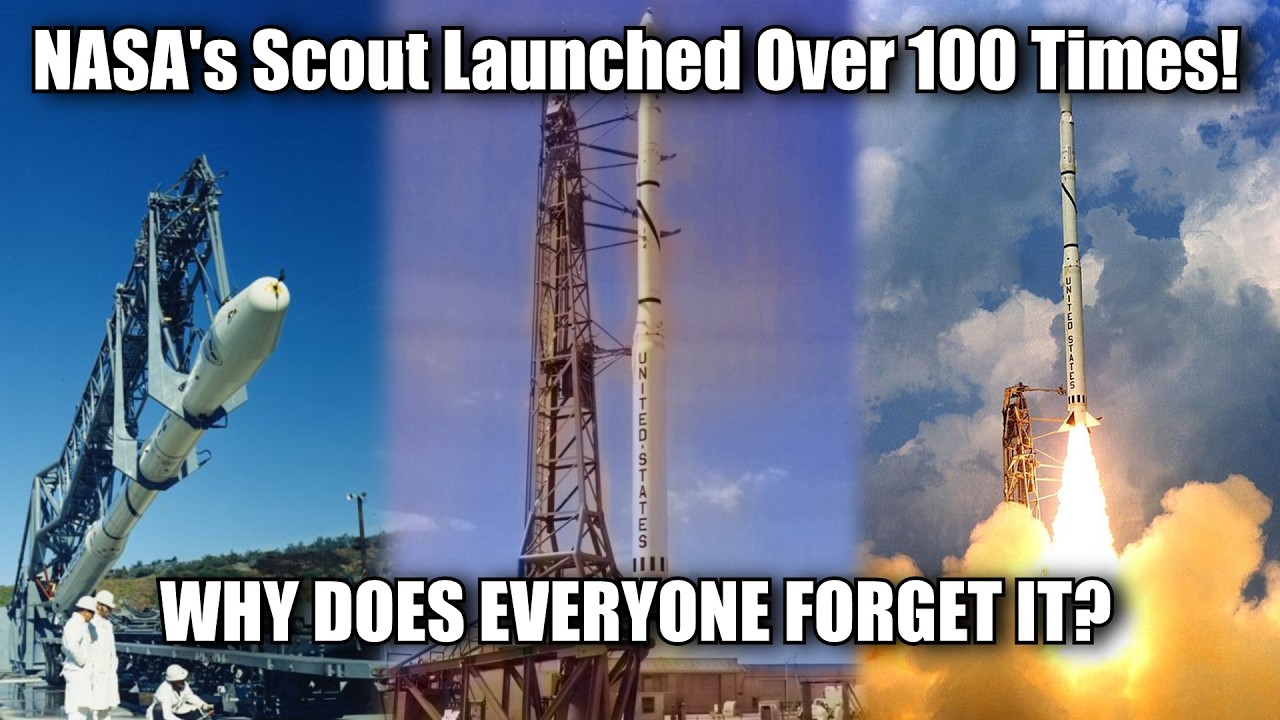While most of NASA’s rockets were designed by the steely-eyed missile men of von Braun’s team in Huntsville, Alabama (the Marshall Space Flight Center), the Scout rocket was the creation of the Langley Research Center in Hampton, Virginia, usually associated with the “Aeronautics” side of NASA. Langley’s research into high-speed flight led them to develop solid rockets to boost flying models to high velocities, allowing testing not possible in wind tunnels.
This led NASA and the U.S. Air Force to explore the possibility of launching small satellites into Earth orbit with a simple, small, and inexpensive launcher that did not require the complex infrastructure of existing orbital launch facilities. The result was Scout, a four stage rocket using solid propellant in all stages. The launcher was around 23 metres tall and weighed 21.5 tonnes at launch, and was able to place payloads of about 122 kg in low Earth orbit.
The first successful orbital launch was of Explorer 9 in February, 1961, and the rocket remained in service in variety of different models until 1994, performing both orbital launches and suborbital sounding rocket missions. In addition to launches from NASA’s Wallops Island site in Virginia and Cape Canaveral, Florida, and Vandenberg Air Force Base in California, Scout launches were also conducted from the Italian San Marco ocean platform located near the equator off the coast of Malindi, Kenya.
A total of 87 successful missions were launched with Scout, with only one launch failure between 1970 and its retirement in 1994.
